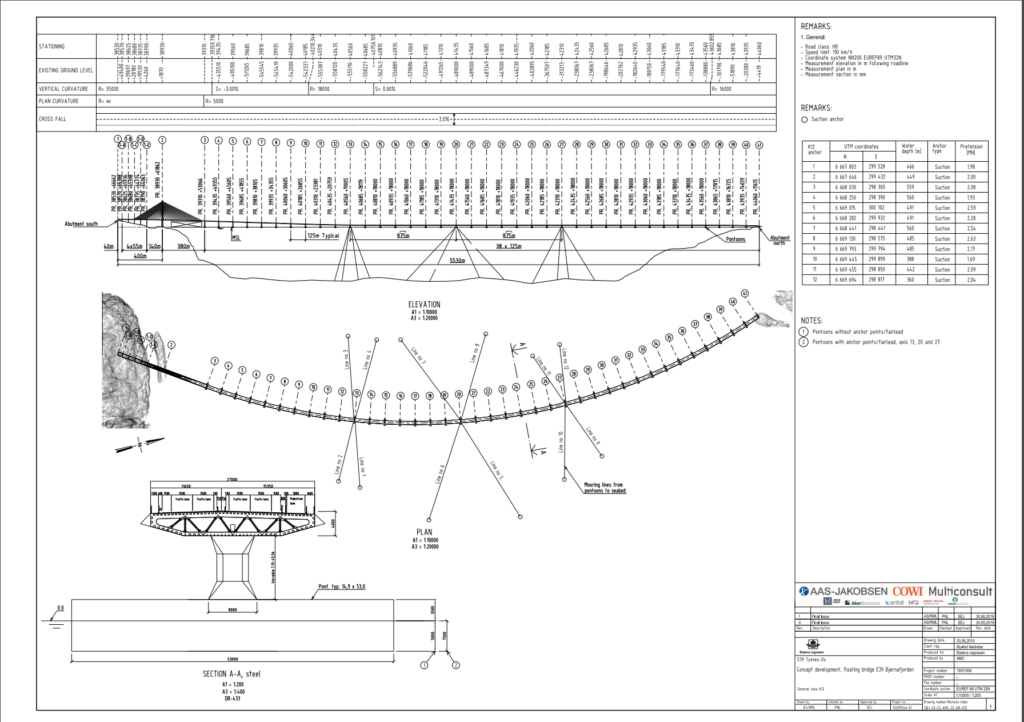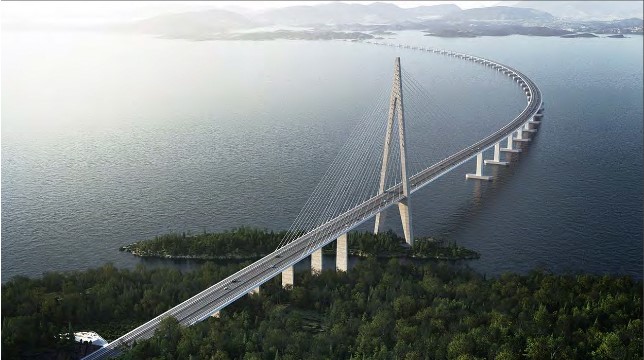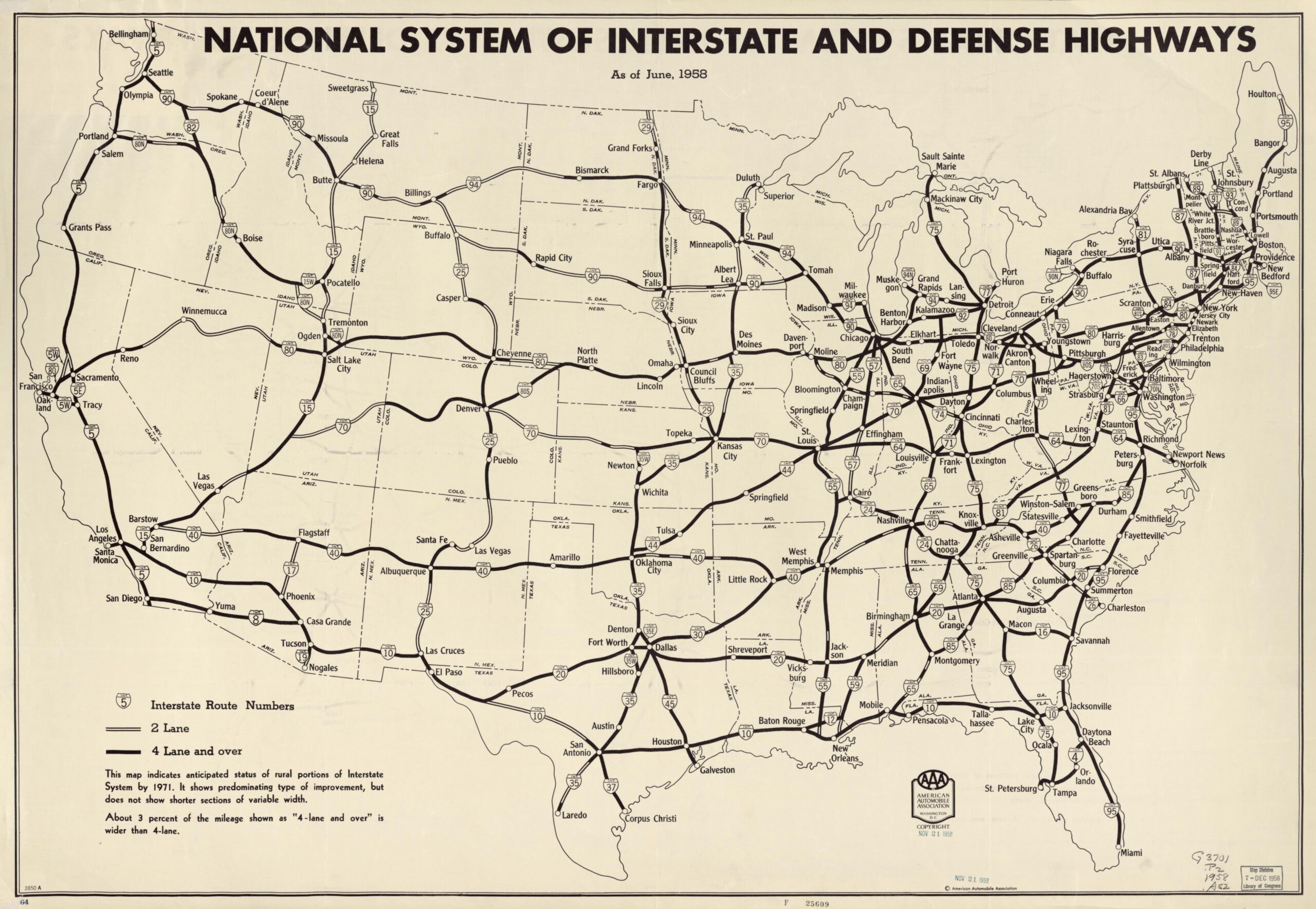Happy New Year everyone! Today marks the first birthday of TheBridgeGuy and I’ve enjoyed bringing you interesting stories from the world of Bridge Engineering over this last year. 2021 promises to be just as interesting and I’m glad you’re along for the ride!
In this edition, I’ll be providing an update on the new Bjørnafjorden crossing proposed by Norwegian Public Roads Administration (NPRA). Details on the project, the crossing and Norway’s history with floating bridges is covered in the blog post from last year and available here.
NPRA recently posted reports on the preliminary design for the floating bridge concept. The concept is for a 4,770 meter long discrete pontoon floating bridge. The bridge consists of 38 steel circtangel (a rectangle with half cylinder ends) shaped pontoons, spaced at 410 feet apart. They will support a 13 foot deep orthotropic steel box girder superstructure, similar to Nordhordland, that will sit with the deck nearly 48 feet off the water at its lowest point.

Three of the 38 pontoons will be anchored to the bottom of the fjord by 4 anchor cables. These three pontoons are each 49 feet wide by 174 feet long, oriented with their long axis perpendicular to traffic. They will draw approximately 24.5 feet of water and have a freeboard of 11.5 feet for an overall depth of 36 feet. The remaining 35 pontoons will not be anchored to the bottom and each draw 16.5 feet of water for an overall depth of 28 feet.

The entire bridge will be designed to have a design life of 100 years. Any components with a design life of less than 100 years will be replaceable with minimal disturbance to vehicular and maritime traffic, remaining open 99.5% of the time.
The entire floating portion of the bridge is designed to be steel. To minimize fabrication costs, the pontoon and box designs were optimized to use automated welding. A circtangel pontoon shape was selected over the more conventional kayak shape to further minimize fabrication costs.
To accommodate marine traffic, the bridge will provide a cable stayed fixed approach span capable of providing a horizontal clearance of 820 feet with 150 feet of vertical clearance. Spans between pontoons will provide a minimum of 38 feet of vertical clearance.
Channelization on the bridge will provide for two 11.5 foot wide lanes in each direction with a 5 foot wide divided median. A single 10 foot wide shared use path will be provided on one side of the bridge. Overall width of the superstructure will be just over 81 feet.

In the Basis of Design document, corrosion protection of the submerged steel will be by passive galvanic cathodic protection. All steel in the tidal splash zone will be super duplex steel or shall be coated with special coatings so as to require zero maintenance over its service life.
Preliminary design drawings show significant thought has been given to the construction of such a bridge, including staging. Anchor cables will be attached to the pontoons and anchors via steel chains, while the main body of the cable will be polyester fiber rope. Fiber rope is expected to have excellent fatigue characteristics, possibly not needing replacement over the bridge’s life span.
Preliminary design is expected to continue over the next year with the project ready for tender bids in 2022. It is exciting to see what is in store for what will become the world’s longest floating bridge. Expect more updates as the design progresses!
Views: 1555






